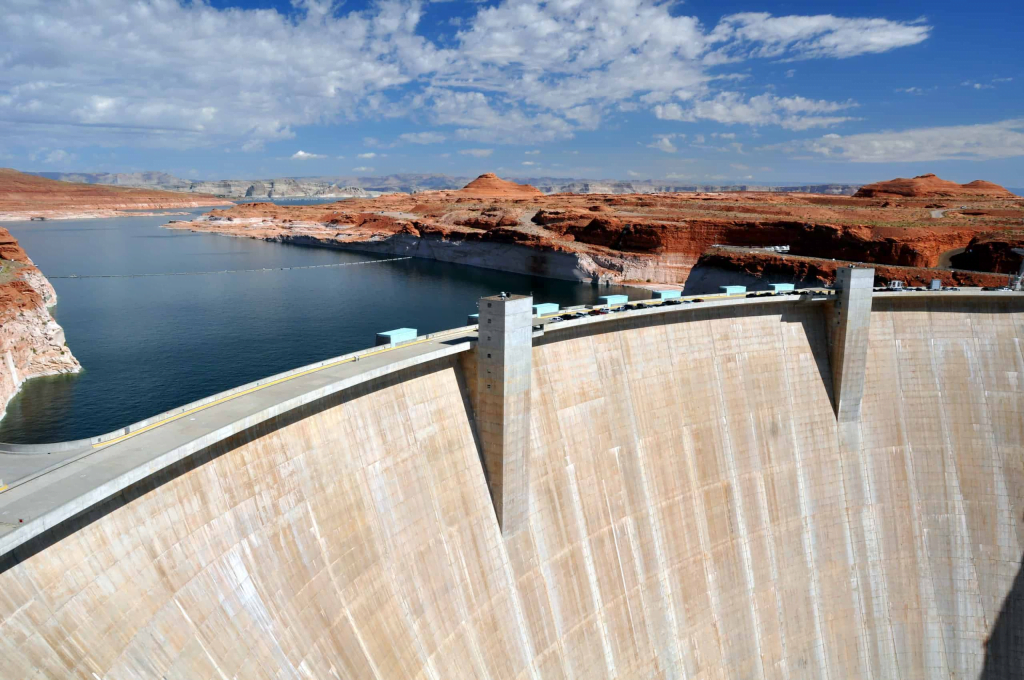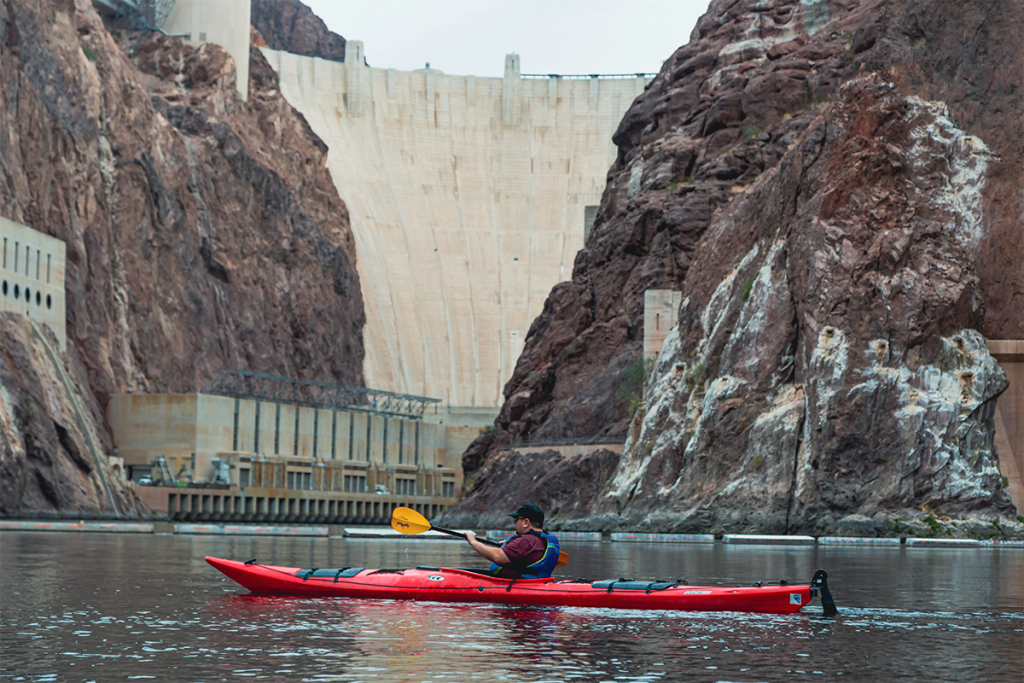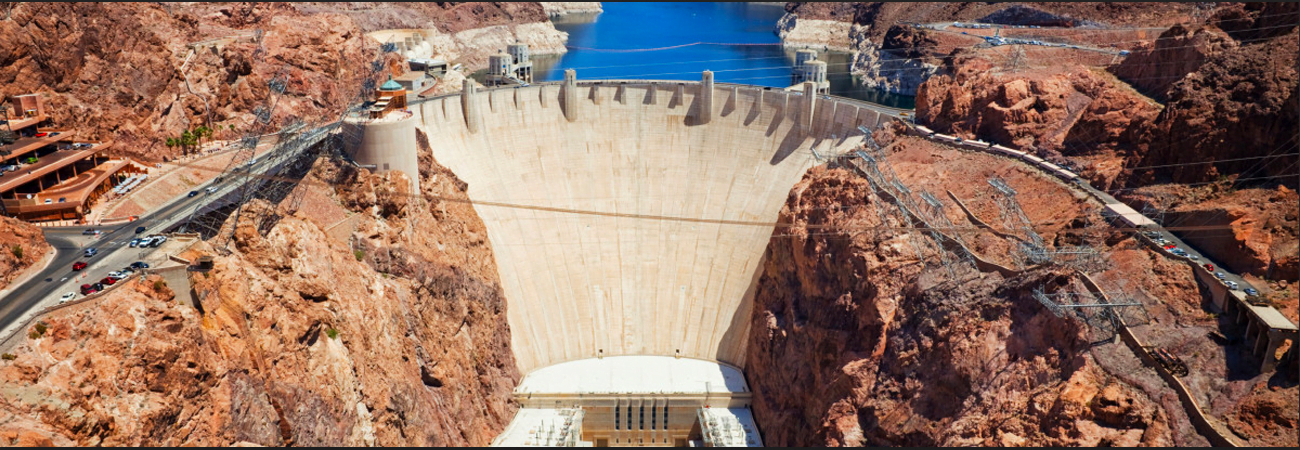Stretching across the Colorado River, this dam may be the most famous one in the U.S. Built during the great depression to offer work for unemployed laborers across the Arizona and Nevada state lines, stories abound about the haunting past of the hydroelectric marvel. A labor of love and tragedy, nearly 115 people died during its construction, and even more may be laying at the bottom of the lake it created. It’s a tourist destination, a fascinating example of hydroelectric power generation, and the source for most of the agricultural water in the region. Today, we’re exploring the haunted history of the famous Hoover Dam.

Constructed between 1931 and 1936, the Hoover Dam was an architectural marvel that fascinated nearby residents as it was built. Originally named the Boulder Dam, the name would be changed in honor of President Herbert Hoover and his efforts in alleviating the suffering from the Great Depression following the financial collapse of the late 1920s. Until that point, such a large undertaking as the Hoover Dam had never been built, and it would lay the groundwork for future projects with concrete and steel. The nearby town of Boulder City, Nevada was set up to house the workers as they completed the dam, and several people remained after and raised their families in the shadow of the dam.
Many stories abound about the construction of the dam, making it one of the most deadly public works projects of the early 20th century. 112 people are reported to have died during the construction, and legends assert that some of the bodies are still encased in the massive structure, forever laid to rest in the wet concrete as it dried. The first victim of the dam was a government official who fell off a barge while scouting for the perfect location for the bridge in 1921. The first death during the actual construction was an electrician apprentice named Patrick Tierney, who fell from the top of the towers built on the Arizona side of the dam.

It’s reported that at least two workers took their own lives by diving off the dam during construction, and a large number of the residents of Boulder City were lost to an outbreak of pneumonia. Many former workers asserted that the deaths were actually caused by carbon monoxide poisoning with the use of gas-powered vehicles in the tunnels during construction. The tunnels were used to divert the Colorado river during the construction of the dam, and during the digging for diversion tunnels, the temperature regularly hit 140 degrees and was filled with thick clouds of exhaust from the vehicles.
The Hoover Dam receives over 7 million visitors a year as a popular tourist attraction, leaving visitors in awe of the sheer scale of the dam creating an oasis in the middle of the desert. The lake created by the construction, Lake Mead, holds even more secrets below the waters. The town of St. Thomas, Nevada lays 60 feet below the waters, after the lake grew to include its location. The residents were advised to evacuate immediately, but not everyone was guaranteed to make it out alive. Rumors float that several people went down with the town, and the final evacuee was Hugh Lord, who paddled away in a canoe in 1938. As water levels receded on a few occasions, some of the abandoned structures could be seen barely above the water, reminding nearby residents of the Mormon settlement town that was abandoned for the reservoir.

As Lake Mead recedes, dozens of bodies have been recovered from the lake, many believing they are victims of the robust mob scene of the fledgling town of Las Vegas in the 1950s and 1960s. Several were found encased in the sand near the shore, and several others were found inside barrels, assumed to be the dominant way in which members of the mafia disposed of remains. In recent years, the reservoir has fallen rapidly, leaving it only 30 percent filled and leading to the discovery of many of the secrets at the bottom of the lake. It’s also been reported that, since the opening of the dam, nearly 100 people have jumped from its heights to the river below, ending their own lives.
Maybe it’s the bodies found in the lake, the ghost town at the bottom, or the deaths during construction that lend credence to the reports of paranormal activity at the dam. Dozens of workers have reported their tools going missing, only to find them in unlikely places like the top of support beams and unused shelves. The most common report of paranormal activity involves the apparitions of those who jumped from the dam, reliving their final moments in life forever in their afterlife. Many of these sightings came when the dam was closed to visitors, leading employees feeling anxious and frightened.

The multitude of deaths surrounding the dam make it a perfect hotspot for spirits and specters. Some employees have reported seeing ghostly men walking the halls in period construction clothing from the 1930s. The most famous is that of the first death from the construction, the aforementioned Patrick Tearney. His electrician work belt still attached to his person, many would see him out of the corner of their eye and he would disappear before they could verify what they saw. Several employees report locations in the dam they refuse to go, owing to the sudden cold spots and the sound of labored breaths echoing in the hallways. Even more frightening, some have reported being touched- tapped on the shoulder or their clothes tugged as if to get their attention. Naturally, no one is there when they turn around, startled.
The infamous history of the largest dam in the United States gives it an eerie atmosphere, even for temporary visitors to the dam. The 112 who died during its destruction being the most frightening statistic of the construction. Even more bodies potentially at the bottom of Lake Mead are tied to terrifying experiences by kayakers and recreation seekers. The ghost town at the bottom of the lake lends itself to legends and spirited tales, and the tragic deaths by suicide keep the terrifying history of the dam alive. You can visit both Hoover Dam and Lake Mead at your leisure, take a tour of the inner workings, and maybe spot a spirit or two yourself in the towering dam that gives power and water to desert towns.
- About the Author
- Latest Posts

Born in Death Valley and raised on the prairie, Deborah is a Wyoming-based paranormal researcher and University of Wyoming graduate. Her interests lie in folklore, history, symbolic interaction and research. She also researches the paranormal academically and is a graduate student studying sociology.


